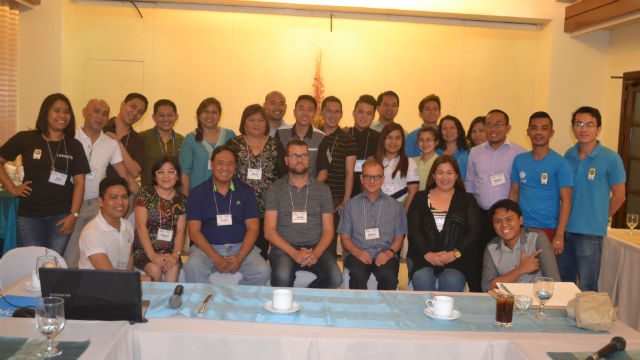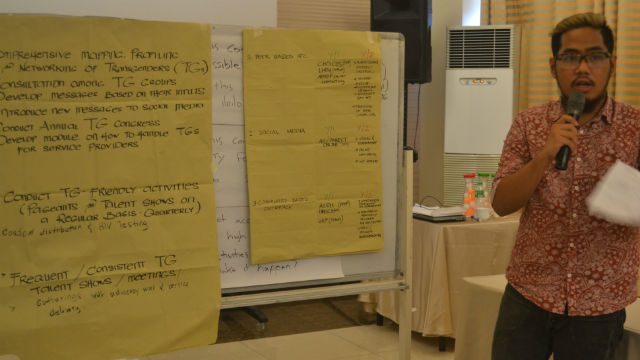SUMMARY
This is AI generated summarization, which may have errors. For context, always refer to the full article.

ILOILO CITY, Philippines – A person gets infected with the human immunodeficiency virus (HIV) every day in Western Visayas.
Responding to this problem, the United Nations Children’s Fund (UNICEF), in partnership with Burnet Institute, an Australian non-profit organization, conducted a seminar workshop and consultative planning meeting on HIV service delivery models for adolescents here on October 5-7.
Among the participants were representatives from the Department of Health (DOH) Region 6, the Population Commission (POPCOM) Region 6, the Department of Social Welfare and Development (DSWD) Region 6, Iloilo City Social Hygiene Clinic, United Western Visayas Inc, Project Red Ribbon, and the Student Alliance for Gender Equality (SAGE) Network.
The Development Framework for Provision of Services for Adolescents as its center, the 3-day workshop provided significant insights into the ongoing adolescent services in the city, especially for identified affected groups, including young males who are having sex with males (MSM’s) and those involved in transactional sex.
As its assistance to the country in meeting its Millennium Development Goal (MDG) of halting and reversing the spread of HIV and Acquired Immuno-deficiency Syndrome (AIDS), UNICEF is currently focused supporting partnership models of service delivery for adolescents in a range of ‘demonstration’ sites across the Philippines.
These models of service aim to provide essential HIV and sexual and reproductive health services for adolescent minors and generate the program evidence for global fund and government investment and coordination for 2016 and beyond.
The pilot sites also include Cebu, Zamboanga, Davao, and Quezon City, which were identified according to UNICEF’s priority areas, inclusion in the UN Joint Program Convergence, and various key indicators, such as the prevalence of HIV, adolescent pregnancy, and reported STIs.
HIV is becoming an epidemic in the country. In April 2015, the Department of Health (DOH) reported that HIV in 6 cities may reach uncontrollable rates.
Global approach
Translating new knowledge into tangible outcomes, by conducting translational research and methods that can work in practical situations, Australian public health workers Bruce Parnell and Chad Hughes, facilitated the workshop with the Family Planning Organization of the Philippines (FPOP).
FPOP chapter manager Mona Diones said that the program is aimed to analyze the current situation of HIV, with focus on Young Key Affected Population (YKAP) per site, asses the current services available, and work on possible frameworks that will scale up or come up with new services where there is need.

Burnet Institute is home to more than 450 medical researchers working across 6 themes, including infectious diseases, maternal and child health, sexual and reproductive health, alcohol and other drugs harm reduction, immunity, vaccines and immunization, and the health of young people, covered under 4 centers: virology, immunology, international health, and population health.
The institute aims to achieve better health for poor and vulnerable communities in Australia and internationally through research, education and public health especially in Africa, Oceania, and Asia. It is also working in countries as China, Fiji, India, Indonesia, Kenya, Lao People’s Republic, Myanmar, Papua, South Africa, Sri Lanka, Thailand, Timor Leste, Vanuatu, and Zimbabwe. (WATCH: Rappler Talk: Curbing the HIV epidemic in PH)
Globally, UNICEF is working with partners towards revitalizing global response to HIV. In 2013, it recognized in the Stocktaking Report on Children and AIDS that the only age group within which AIDS-related deaths have not decreased in the past decade are those within the 10-19 year old bracket. This reflected how new infections among adolescents have not decreased compared to other age groups.
To address this problem, it formulated an agenda for action that seeks to fast track efforts to end the AIDS epidemic as a public health threat in 2030. – Rappler.com
Russel Patina is a Rappler mover in Iloilo City.
#StayNegatHIVe is MovePH’s HIV/AIDS awareness campaign spearheaded by our communities across the Philippines, and held in partnership with DM9 and LoveYourself.
Add a comment
How does this make you feel?





There are no comments yet. Add your comment to start the conversation.